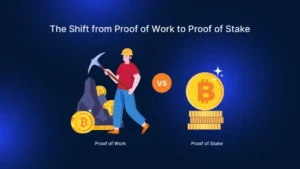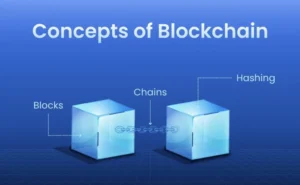
Bitcoin MEV (Miner Extractable Value) is reshaping how we think about Bitcoin’s security. MEV refers to the profit miners can extract by prioritizing, including, or excluding transactions from the blockchain consulting service . While Bitcoin’s security model traditionally relies on miners’ incentives to act honestly, MEV exploitation introduces a new layer of complexity. Miners might be tempted to manipulate transaction ordering to maximize their profits, potentially compromising the network’s integrity. This can lead to unfair advantages for those with more computational power or sophisticated strategies, disrupting the equitable nature of Bitcoin transactions. As Bitcoin MEV continues to evolve, it’s crucial to address these challenges to safeguard the network’s security and fairness.
What is Miner Extractable Value?
Miner extractable value (MEV) refers to the profit that miners can make by selecting, including, or excluding transactions from the blocks they mine. Essentially, it is the potential value that miners can extract from manipulating the order of transactions within a block. This concept is more commonly discussed in the context of Ethereum and other smart contract development, where the ability to reorder transactions can lead to significant financial gains.
Types of MEV
MEV can manifest in various forms depending on the blockchain environment. In the context of Ethereum, common types include:
-
Front-running
This involves placing a transaction before another known transaction to capitalize on price movements or other benefits.
-
Back-running
This is where miners place a transaction after a known transaction to benefit from its effects, such as taking advantage of price changes.
-
Sandwich Attacks
This occurs when a miner places transactions around a target transaction, profiting from the price changes that occur as a result.
Does MEV Apply to Bitcoin?
While MEV is more commonly associated with Ethereum due to its complex smart contract capabilities, Bitcoin can also experience similar phenomena, albeit in a different form. Bitcoin’s transaction model is simpler, focusing on transferring value from one address to another without the additional layers of programmability seen in Ethereum.
In Bitcoin, MEV might not be as pronounced, but it can still occur. For instance, miners can prioritize transactions with higher fees, potentially leaving out transactions with lower fees. This form of MEV, although less sophisticated than in Ethereum, can still influence the transaction processing dynamics and fee markets.
An Early Example of MEV in Bitcoin
One early example of MEV-like behavior in Bitcoin can be traced back to the practice of “fee sniping.” In this scenario, miners would prioritize transactions with higher fees over those with lower fees. This practice became more noticeable during periods of high network congestion, where transaction fees spiked, and miners had the incentive to include transactions with higher fees to maximize their earnings.
Another example involves miners manipulating transaction ordering to exploit the transaction malleability issue. This issue allowed miners to change the transaction ID, leading to potential reordering of transactions for financial gain. Although this was not MEV in the traditional sense, it illustrates how miners have historically had some level of influence over transaction processing.
Benefits of MEV Exploitation
For miners, exploiting MEV can be financially beneficial. By manipulating transaction ordering, miners can increase their earnings from transaction fees or capitalize on arbitrage opportunities. This can be particularly lucrative during periods of high network activity or in environments where transaction fees are volatile. Additionally, MEV exploitation can be seen as a strategy for block reward optimization, allowing miners to maximize their overall rewards from both transaction fees and block subsidies.
However, the benefits of MEV exploitation come with trade-offs. While miners might enjoy short-term financial gains, the long-term impact on the network can be detrimental. For instance, increased transaction fees can discourage users from making transactions, leading to lower network activity and reduced overall network health.
Bitcoin MEV’s Impact on Bitcoin Security
The impact of MEV on bitcoin security is a topic of ongoing debate. Unlike Ethereum, where MEV can significantly influence the behavior of smart contracts and decentralized applications, Bitcoin’s simpler transaction model limits the scope of MEV. However, there are still concerns:
-
Increased Transaction Fees
MEV exploitation can lead to higher transaction fees, which might make Bitcoin transactions less accessible to average users. This could impact the overall usability and adoption of Bitcoin.
-
Network Congestion
By prioritizing transactions with higher fees, miners might contribute to network congestion. This can lead to slower transaction processing times and a backlog of unconfirmed transactions.
-
Centralization Risks
If large mining pools are able to effectively exploit MEV, this could contribute to centralization risks. Smaller miners might struggle to compete, leading to a more concentrated mining environment.
-
Trust Issues
The perception that miners have undue influence over transaction ordering could undermine trust in the network. Users might question the fairness and transparency of the transaction processing system.






